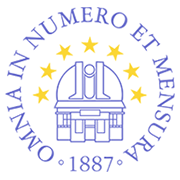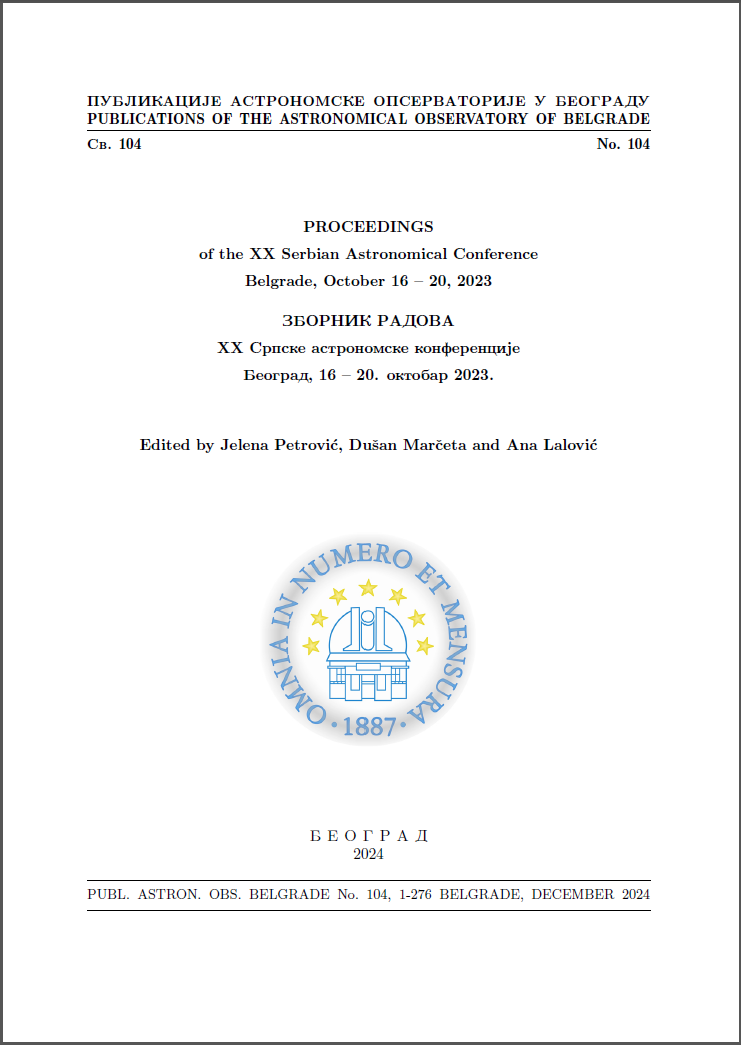BARYONIC MASS IN NEARBY GALAXIES (PHD THESIS)
Milena Jovanović.
Publication
PUBLICATIONS OF THE ASTRONOMICAL OBSERVATORY OF BELGRADE104, Page 73-78, https://doi.org/10.69646/aob104p073
PROCEEDINGS of the XX Serbian Astronomical Conference, Belgrade, October 16 - 20, 2023, Edited by Jelena Petrović, Dušan Marčeta and Ana Lalović
Published by: Astronomical Observatory, Volgina 7, 11060 Belgrade 38, Serbia
Published: 15. 12. 2024.
Abstract
Abstract. In my doctoral research, I utilized high-resolution observations from the HI Nearby Galaxy Survey (THINGS) to model the dynamical and baryonic mass distributions of nearby galaxies. These observations of neutral atomic hydrogen, boasting extensive data, enabled us to extract the rotation curve, thereby deducing the total dynamical mass up to a significant radius. In conjunction with infrared observations, we concurrently fit the dynamical mass with the observed stellar mass, the neutral gas component, and various dark matter (DM) models. The stellar mass was adjusted using the mass-to-light ratio, a critical factor in our study. We describe the DM component within the ΛCDM framework, using two distinct profiles: the pseudo-isothermal sphere and Navarro-Frenk-White. With the values for dynamical, stellar, gas, and dark matter mass determined, we derived assorted mass functions and distribution functions for our sample. From all the distribution functions we only present and discuss the distribution of the mass-to-light (M/L) ratio in detail here. The parameter is crucial for calculation of baryonic mass since it connects the observable quantities with the stellar (and consequently baryonic) mass required by dynamical models.




